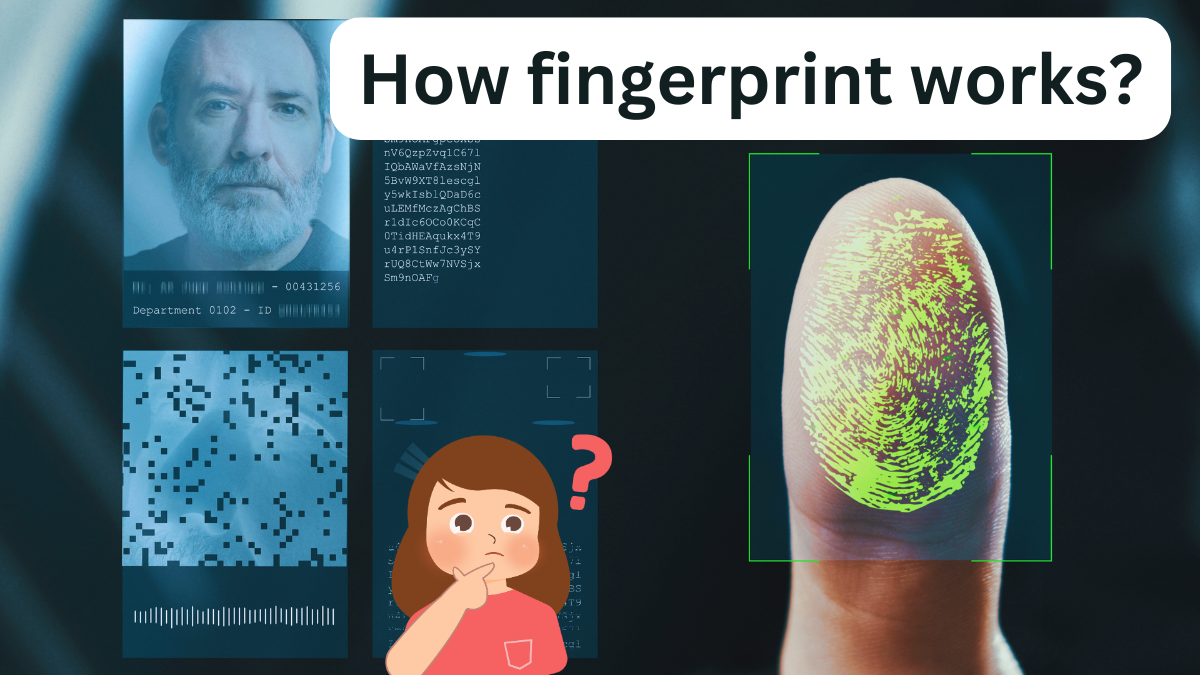Ek in display fingerprint sensor phone ke display ke ander se humari finger ko precisely kese scan kr leta hai?
Ye fingerprint sensor ek chhoti si technology hai jo kaafi powerful hai aur aapki security ko badhane mein madad karti hai. Phele to ye samjhte hai ki fingerprint sensors kin principles pe kaam krta hai, Fingerprint sensor apki ungli ke unique pattern ko scan karta hai aur usse recognize karta hai. Jab aap apni finger or thumb sensor par rakhte hain, sensor aapke fingerprint ka high-resolution image leta hai.
Phone mein 2 type ke in-display sensors use hote hai. capacitive and ultrasonic fingerprint sensor. Capacitive fingerprint sensor LCD screen mein kaam nhi krta kyu ki ye screen ke through light pass hone pe hi kaam krta hai, jo ki LCD screen mein impossible hai, isi liye isko OLED screen ke piche place kiya jata hai. Ye fingerprint ki ek digital photocopy banake data se match krta hai.
Ye sensor aapki ungli scan karke fingerprint ka 3D image banata hai. High-frequency sound waves outer skin layer ke through penetrate karti hain aur phir niche wale dermis se reflect hoti hain. Is process se ridge lines aur sweat pores dono capture hote hain, jo even dirty ya oily fingerprints ko bhi easily distinguish kar sakta hai.
Ultrasonic fingerprint sensor bilkul hi alag tarike se kaam krta hai. Ye normal fingerprint sensor ki tarah image matching ke principle per kaam nhi krta, bulki ye finger ke upar ultrasound ka use krta hai aur 3D fingerprint data ko collect krke ek highly detailed fingerprint map generate krta hai. Aur uss data se saved data ko match krta hai. Kyuki ye ultrasound ka use krta hai to aap screen ke upar kisi bhi tarah ka protector use kr sakte ho. Ultrasonic fingerprint sabse phele 2019 mein launch hua, tha aur isko sabse phele use kiya tha samsung ke Galaxy S10 mein.
History of Biometrics
Biometric ki kahani 500 BC ke around Babylonian empire se shuru hoti hai. Lekin pehli biometric identification system ka record 1800s mein Paris, France se hai. Alphonse Bertillon ne ek aise method develop kiya jo specific body measurements ke zariye criminals ko classify aur compare karta tha. Yeh system itna perfect nahi tha, lekin isne biometrics ke field mein pehli baar kadam rakha.
Uske baad, 1880s mein fingerprinting ka concept aaya. Yeh sirf criminals ki identification ke liye nahi, balki contracts par signature ke liye bhi use hone laga. Yeh samjha gaya ki fingerprint ek vyakti ki identity ka pratik hai aur uske zariye accountability bhi rakhi ja sakti hai. Halanki fingerprinting ka shuruat kisne ki, is par debate hai, lekin Edward Henry ko Henry Classification System ke development ke liye jaana jaata hai.
Yeh pehla system tha jo fingerprint ke unique structures ke basis par identification karta tha. Is system ko law enforcement ne jaldi adopt kar liya aur yeh Bertillon ke methods ko replace karke criminal identification ka standard ban gaya. Iske baad, ek puri sadi tak research chali ki aur kis tarah ke unique physiological characteristics ko identification ke liye use kiya ja sakta hai.
The Boom in the world of Biometrics
Agle sadi ke dauran, biometrics ka field tezi se badh gaya. 1900s ke dusre hissa mein itne saare advances hue ki unko saare list karna mushkil hai, lekin yeh hain kuch highlights:
1960s mein, semi-automated facial recognition methods develop hue. Ismein administrators ko image ke facial features analyze karne padte the aur usable feature points nikalne padte the. Yeh abhi ke phone unlock karne ke methods se kaafi manual tha!
1969 tak, fingerprint aur facial recognition law enforcement mein itna widely use ho chuki thi ki FBI ne automated processes develop karne ke liye funding shuru ki. Yeh ek catalyst bana advanced sensors aur data extraction technologies ke development ke liye.
1980s mein, National Institute of Standards and Technology ne Speech group banaya jo speech recognition technology ke processes ko study aur advance karne ka kaam karta tha. Yeh studies aaj ke voice command aur recognition systems ke basis hain.
1985 mein yeh concept propose kiya gaya ki jaise fingerprints unique hote hain, waise hi irises bhi unique hain. 1994 tak pehla iris recognition algorithm patent kiya gaya. Saath hi yeh bhi pata chala ki aankhon ke blood vessel patterns bhi unique hote hain aur authentication ke liye use kiye ja sakte hain.
1991 mein, facial detection technology develop hui jo real-time recognition ko possible bana rahi thi. Halanki is process mein kuch faults the, lekin isne face recognition development mein bahut zyada interest jagaya.
2000s tak, USA mein hundreds of biometric authentication recognition algorithms functional aur patented ho chuki thi. Biometrics ab sirf large corporations ya government settings mein hi nahi, balki commercial products mein bhi use hone lagi thi aur 2001 ke Super Bowl jaise bade events mein bhi implement kiya gaya.
Also read:

